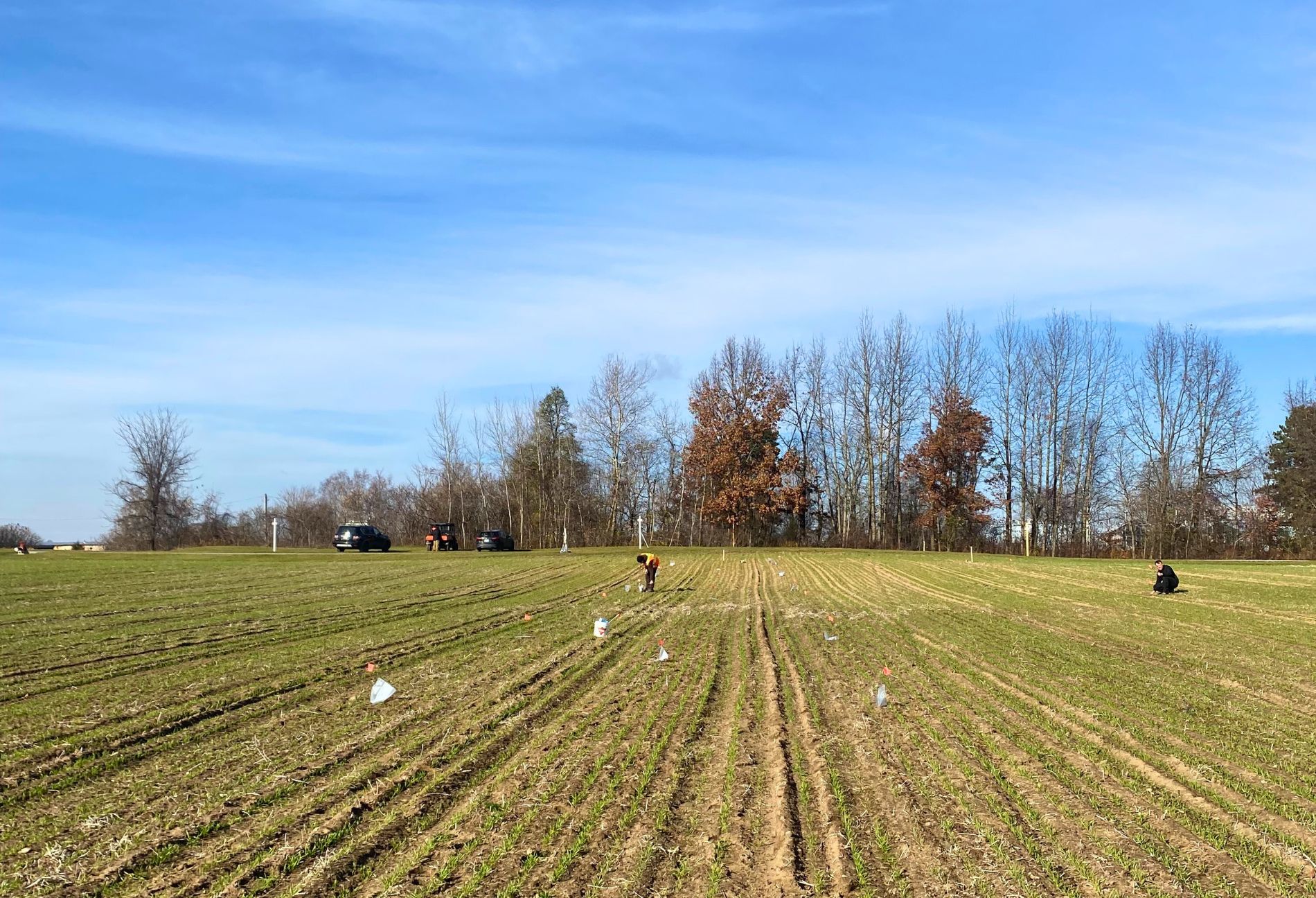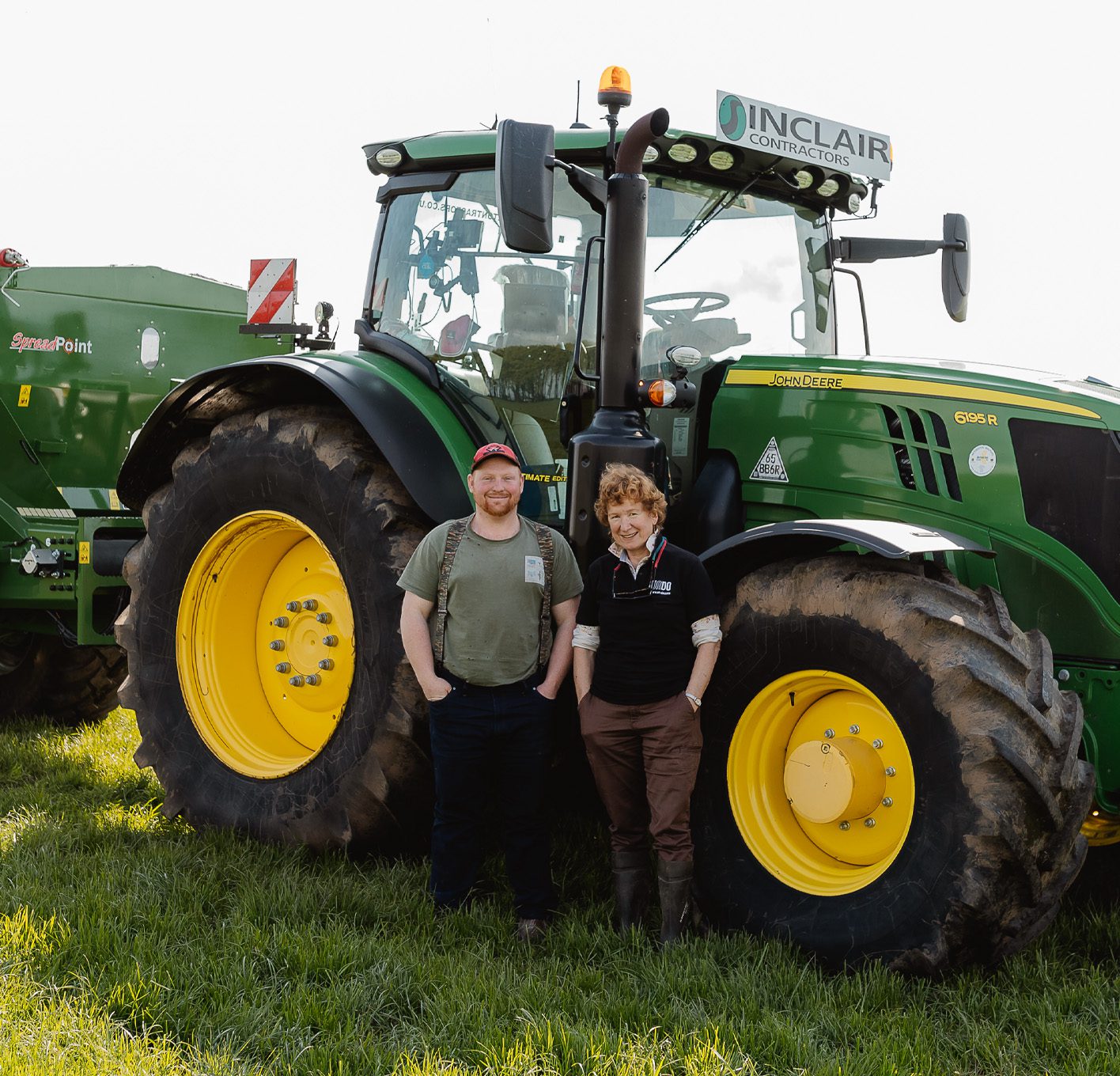As climate breakdown becomes a reality, the need for innovative, scalable solutions has never been more urgent. One promising approach is enhanced rock weathering (ERW), a natural process that removes carbon dioxide from the atmosphere, supercharged by human intervention.
By spreading finely crushed silicate rocks on agricultural soils, ERW accelerates natural chemical reactions that capture and store carbon dioxide, while also enhancing soil health and crop productivity.
At UNDO, our Sentinel Sites serve as research hubs, designed to push the boundaries of ERW science and validate its effectiveness as a climate solution. As scientific methods and technologies evolve, we remain committed to using the best available research to inform our approach and ensure our work reflects the latest advancements in the field.
What Are Sentinel Sites?
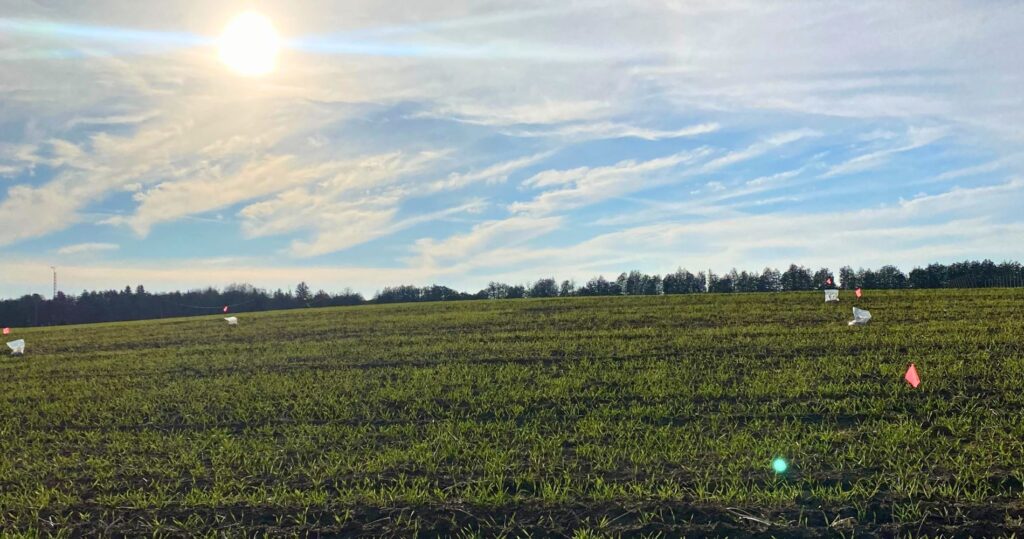
Sentinel Sites are UNDO’s “deep science” plots – small but meticulously designed experimental farms where cutting-edge techniques are used to collect comprehensive data across all phases of the weathering process: solid, aqueous, and gaseous. By employing sophisticated tools such as isotopic tracing techniques and bioinformatics, we can monitor the relationships between all of the biogeochemical processes that drive weathering reactions. Unlike traditional research plots, Sentinel Sites enable us to gather high-quality, real-world data that strengthens the scientific foundation for ERW.
Sentinel Sites also allow us to test and validate new methodologies for monitoring carbon removal, making them critical for advancing the deployment science of ERW. Through these plots, we can explore how different variables – such as soil type, climate conditions, and cropping systems – impact the weathering process and carbon removal rates. This ensures that the data generated is applicable across a wide range of environments and informs global deployment strategies.
What sets these sites apart is their capacity to go beyond the requirements of verification bodies for MRV. By leveraging advanced technologies and methodologies, Sentinel Sites enable groundbreaking research that helps refine ERW practices and deepen our understanding of its potential. These sites not only measure the carbon removal potential of rock weathering, but also examine secondary benefits, such as improved soil health, increased crop yields, and reductions in other greenhouse gases like nitrous oxide.
How Sentinel Sites Work
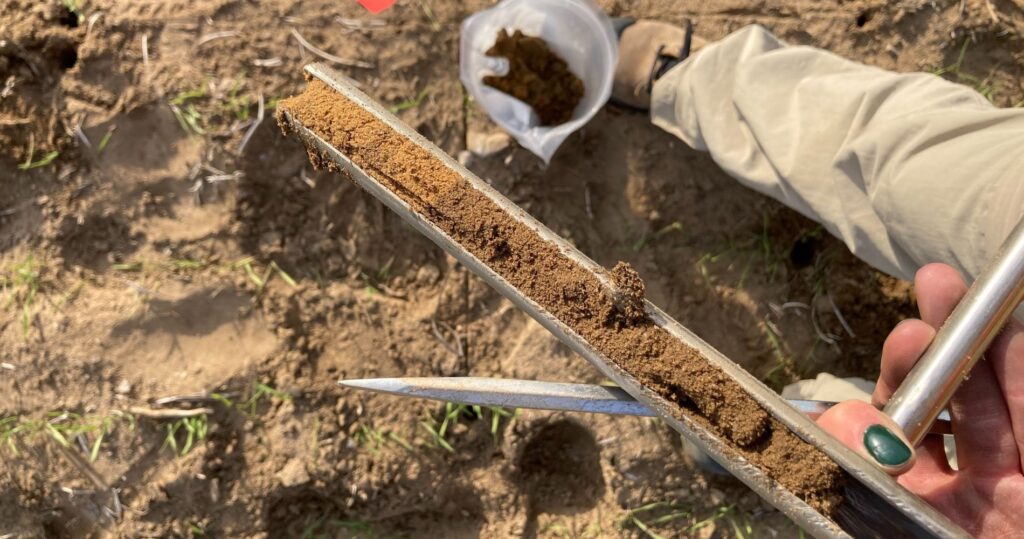
At Sentinel Sites, we employ a range of novel techniques to monitor and measure the impacts of ERW. These include:
– The “Teabag Test”: A traditional method for in-field measurement of how much rock has weathered over time. By burying controlled quantities of rock material in porous bags, we can track changes in mass and composition to directly assess weathering rates under real-world conditions.
– Pore Water Suction Devices (Lysimeters): These tools are used for aqueous phase analysis, extracting water at various depths to monitor changes in alkalinity, pH, cation content, and other parameters. The water samples undergo detailed laboratory analysis, including inductively coupled plasma mass spectrometry (ICP-MS), to quantify dissolved cations. Pore water data is particularly valuable for MRV and CDR as we can directly observe bicarbonate export. Additionally, these insights help in identifying other chemical processes such as strong acid weathering and nutrient cycling within the soil. By tracking bicarbonate levels, we can quantify the carbon that has been permanently captured and removed from the atmosphere.
– Hydrologically Isolated Plots (HIPs): At some Sentinel Sites, our set-up enables us to collect and store all fluid runoff from the site, providing a complete picture of water movement through the system. This method eliminates the challenges of traditional pore water sampling, where the area and timeframe over which water is integrated can vary. By capturing and analysing all water leaving a plot, we gain a comprehensive understanding of the weathering process and its contribution to carbon removal.
– Gas Analysis: Using advanced tools like Picarro analysers and Eosense gas chambers, we monitor nitrous oxide and carbon dioxide fluxes with high precision. By analysing these gases in situ and over time, we can assess the role of ERW in suppressing nitrous oxide emissions, another potent greenhouse gas.
– Developing new methodologies: We are pioneering novel techniques for MRV, which track the movement of cations through the soil to quantify the export of cations from the surface into deeper parts of the soil. By measuring the total cations present immediately after rock application and comparing them to levels one year later, we can determine how much weathering has occurred and how this translates into carbon capture. We are collecting field data to true out this promising new MRV approach at our Sentinel Sites.
– Microbial Community Analysis: ERW not only impacts soil chemistry but also influences the microbial communities within the soil, which in turn, can speed up rock weathering. We are partnering with microbiologists to explore techniques such as bioinformatics and DNA sequencing to examine these changes.
– Soil Moisture and Temperature Sensors: The LabCell sensors will measure soil moisture, temperature and electrical conductivity. The sensors are highly accurate and minimise sensor-to-sensor variability to less than 1%. The data is autonomously collected through the data loggers into the cloud. The University of Washington will use this data for hydrological modelling.
By integrating these datasets across soil, water, and gas phases, Sentinel Sites provide a comprehensive view of the weathering process, capturing both macroscopic and molecular-scale interactions. Advanced modelling techniques are then used to cross-validate findings, ensuring that results are robust and reliable. This holistic approach is particularly important in the early stages of ERW development, allowing researchers to uncover synergistic effects between different environmental factors and refine predictive models for carbon removal efficiency.
Spotlight on Canada’s Sentinel Site
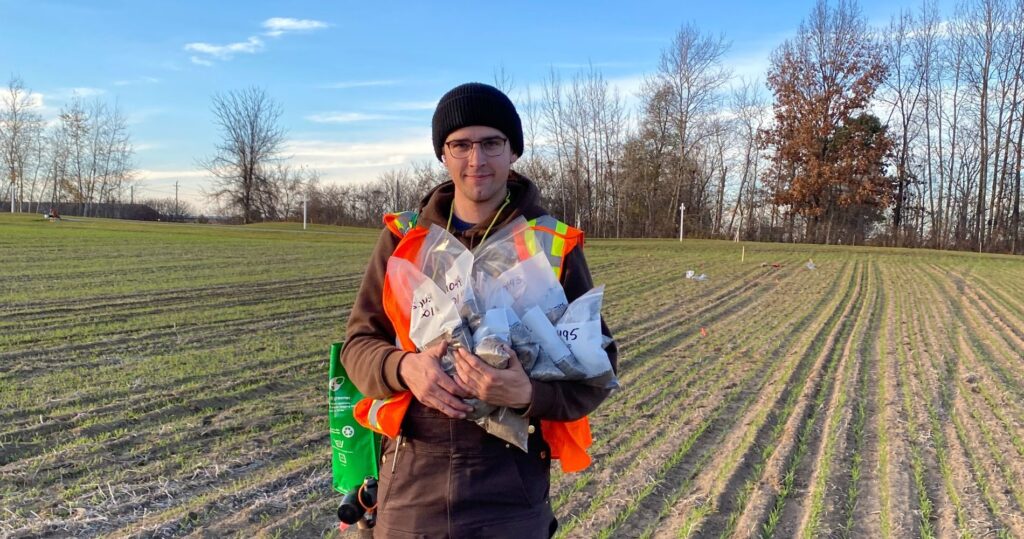
The Simcoe Research Station in Canada is one of our flagship Sentinel Sites. Located in southern Ontario, this site offers ideal conditions for ERW research, including sandy loam soil, steady slopes, and over 1,000 mm of annual rainfall. The site’s crop rotation alternates between soybeans and wheat, providing a realistic agricultural context for our experiments.
The plots are meticulously designed with control and application areas to ensure accurate comparisons. Each plot is equipped with advanced monitoring equipment to capture data across all phases of the weathering process.
Local expertise and infrastructure from the University of Guelph further enhance the research quality and operational efficiency at the site. In addition to advanced monitoring techniques, the measurement team and academic partners periodically take soil cores to track changes in mineral composition, cation movement, and weathering rates over time. The Simcoe Sentinel Site exemplifies how targeted, high-quality research can provide actionable insights into the scalability and effectiveness of ERW.
Collaborative Science
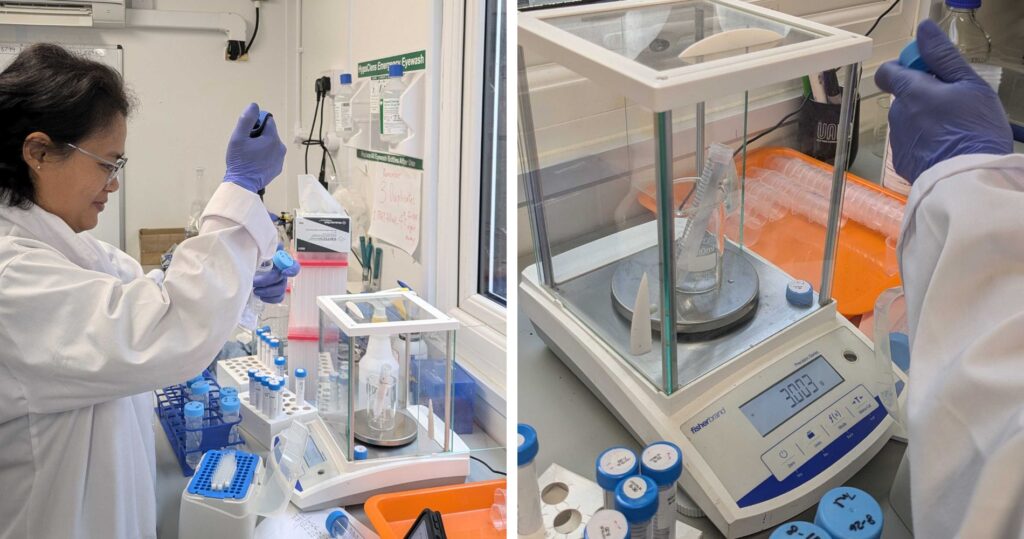
The success of our Sentinel Sites is driven by strong partnerships with leading academic institutions. These collaborations strengthen the scientific foundation of our research, providing the expertise and data needed to refine our understanding of ERW and support its role as a credible carbon removal solution. Key partners include:
– University of Guelph: Assist with sampling, analysis, and project delivery at the Simcoe site. Their expertise in agricultural research and soil science is invaluable for understanding how ERW interacts with cropping systems.
– Yale University: Provides scientific advisory support and contributes to gaseous phase analysis, helping to refine our understanding of greenhouse gas impacts. Additionally, Yale runs Total Cation Accounting (TCA) analysis on all Simcoe soil samples, ensuring precise measurement of cation movement and weathering rates.
– University of Washington: Conducts hydrological modelling to enhance our understanding of water movement through ERW systems, ensuring that our aqueous phase data is robust and comprehensive.
By pooling resources and expertise, these partnerships enable us to tackle complex scientific questions and drive innovation in ERW research.
Research Goals and Broader Impact
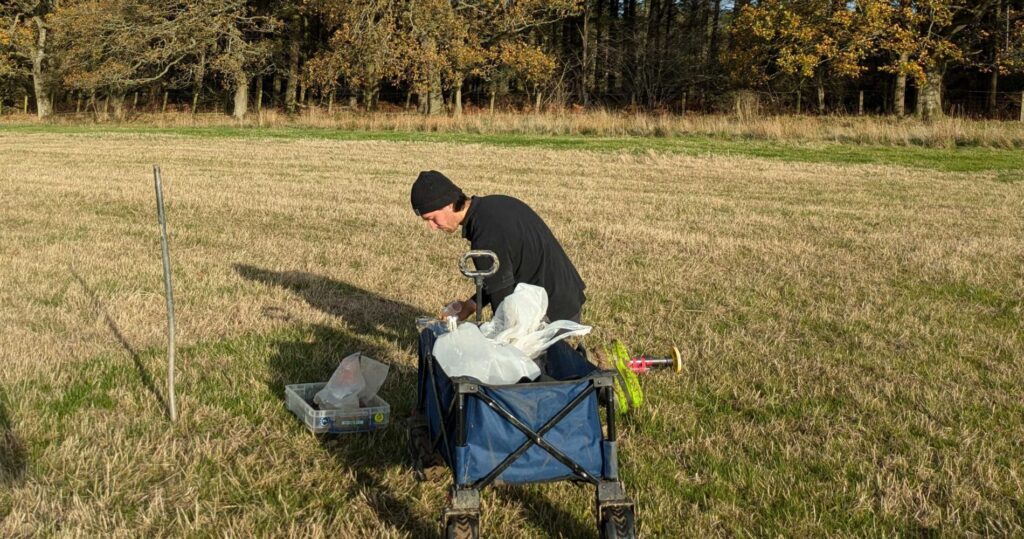
Our Sentinel Sites are designed to answer key scientific questions and provide actionable insights that advance the science of ERW. These include:
– Tracking Weathering Rates and Products: Conducting full-scale monitoring across all measurement techniques to develop a comprehensive understanding of the geochemical process. This data is essential for refining models and improving predictive accuracy.
– Near Field Zone (NFZ) Analysis: Utilising field measurements to determine the diffusion length of carbon dioxide gas in soil under varying conditions, helping to better quantify ERW’s impact.
– Trialing Novel MRV Techniques: Implementing Total Cation Accounting (TCA) to measure cation movement in soil mixed with rock over time. By tracking the loss of calcium and magnesium from the NFZ, we can precisely calculate total carbon dioxide removal (CDR).
– Verifying Weathering Rates: Using solid-state permeable membrane bags as a lower-bound measurement for in-field rock weathering, providing real-world validation of reaction rates.
– Hydrological Modelling: Mapping water movement through soil, into underground aquifers, and out to river systems to understand ERW’s hydrological impacts and ensure sustainable deployment.
– Greenhouse Gas Monitoring: Measuring reductions in nitrous oxide and other greenhouse gases to evaluate ERW’s broader climate benefits and potential for reducing non-CO₂ emissions.
These research objectives not only enhance the scientific foundation of ERW but also contribute to its credibility as a scalable climate solution. By generating robust, real-world data, Sentinel Sites build confidence among stakeholders, including policymakers, researchers, and industry leaders, helping to integrate ERW into broader carbon removal strategies.
Leading the Charge in Carbon Removal Innovation
UNDO’s Sentinel Sites are at the forefront of ERW research, pushing the boundaries of what’s possible in carbon removal science. By combining innovative techniques, rigorous data collection, and collaborative expertise, these sites play a vital role in advancing our understanding of ERW and its potential to mitigate climate change.
As scientific methods evolve, our approach is guided by the best available research and measurement techniques, ensuring that our findings reflect the most up-to-date understanding of ERW. The data and insights generated at Sentinel Sites strengthen the scientific foundation of ERW and provide a roadmap for scaling this solution to meet the global demand for carbon dioxide removal.
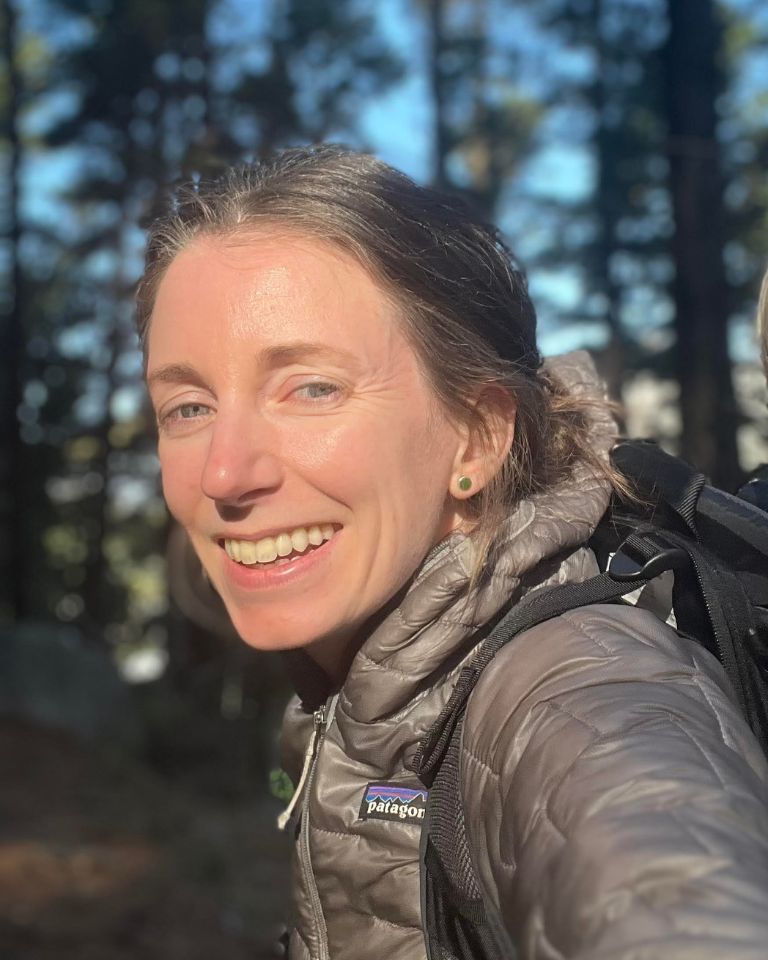 " alt="">
" alt="">
Rosalie leads our geochemistry team, overseeing development of our model as well as steering the analysis and interpretation of the geochemical data we use for MRV. Rosalie holds an MSc in biogeochemistry from the University of Cambridge and a PhD in sedimentary geochemistry from University College London. She has over a decade of subsequent research experience, and before joining UNDO, was a senior lecturer at the University of Cape Town.
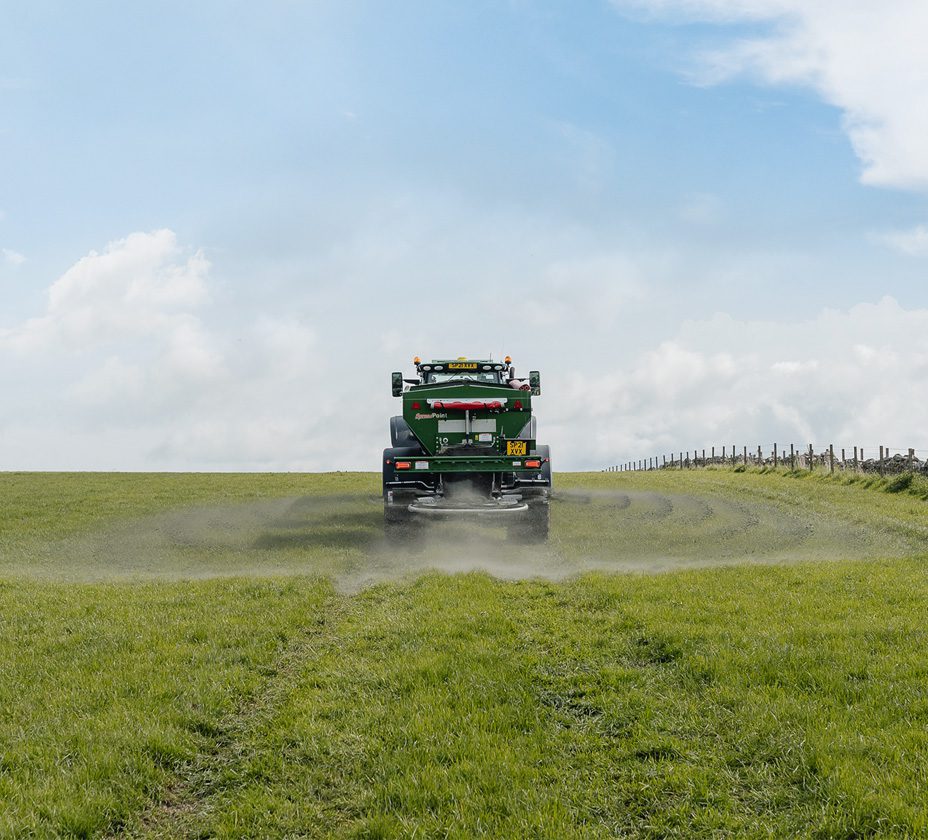

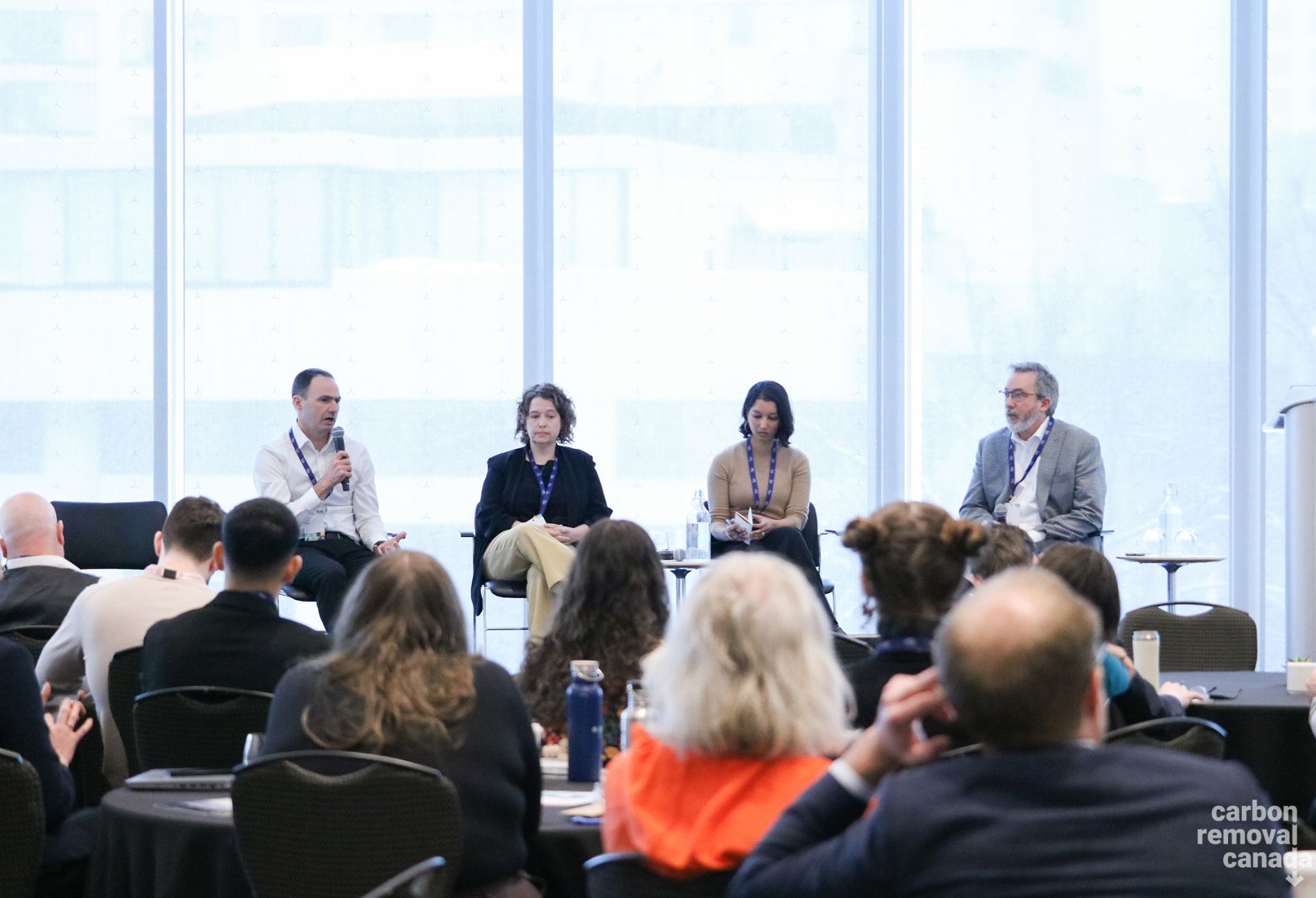 " />
" />